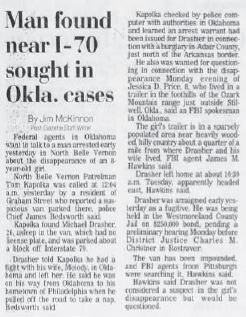A year ago this month, I met a retired detective. I was speaking at a local rotary club for Veteran’s Day. It was in the middle of the pandemic, so the meeting was via zoom, which I had never used before. I have never been very good at public speaking. I am not sure if the technology helped or hurt.
John Hartman sent me an email a few days later and asked me to meet for coffee. He had a story to tell and asked if I would want to help. We met at Panera. I took notes. The story was compelling. I had plenty of questions. And as we talked, I caught myself already piecing together the narrative in my head. Fiction? Non-fiction? Creative non-fiction? First-person or third-person? I already had plenty of unfinished projects, so the last thing I needed was another one. Trying to be a writer while working full-time is no easy task. I have always considered myself a double agent in that regard, juggling ideas and images so fast that they start to blur together.
The story John told me ended on a summer night in Belle Vernon where some good police work stopped a monster. But the story began in Stilwell, Oklahoma, where the monster bashed in the head of an eight-year-old girl just a couple of days earlier and left her dead in a ditch. We don’t know what sparked that rage. We don’t know what happened in the days that followed.
So it has been a year of research in my spare time. John has collected every newspaper article he could find, and I have taken more notes. Last week we visited the scene where the significant events took place on a fateful evening in July over twenty years ago. As I walked around and snapped photos, John narrated what was the same and what had changed. We drove around the town; a river town decimated in the eighties after the steel industry evaporated. Many of the locations appeared in the HBO series American Rust. However, this isn’t the fictional city of Buell. This is a real town with a real past. Real cops and real bad guys.
Google kept sending me messages about exceeding my storage space on the drive back home, so I had to buy more. When I downloaded all the photos and videos, they totaled 7.43 gigs: seven videos, 65 pictures, and one massive audio file. Now the work begins. John will pull some strings and use his cop connections to get access to court documents and evidence. I will look at pictures that I need to see but am certain I will regret ever seeing. We have a list of open items that far exceed the completed actions. We might have to take a road trip to Oklahoma. We might have to interview some people that will likely not want to talk to us. I am nervous and excited about it all.
I want to figure out what events led to John encountering this man on that night many years ago. I can’t help but believe there was a touch of fate. I am also confident that had fate not intervened, there would be more young girls found in ditches, maybe even the very next morning. This is not a CSI story with forensics experts swarming the area wearing coveralls and snapping photos while developing theories. Small river towns do not have CSI units. They have a handful of dedicated cops. These cops do everything they can to protect their community and the surrounding communities. They have nothing but their instincts to help them in the field. The bad guys forever outnumber them. They may lose a lot of battles, but now and then, they win one. This is the story that I hope to tell. And that is why we chose the working title, “Good Cop: The police work that derailed a monster.”
rogue rhetoric
random musings by michael d. durkota
My new project: A true crime story
Veterans deserve a whole month
 My 7th annual Veterans’ Month charity promotion begins on November 1. As in the past, I will donate 100% of all book proceeds to organizations that support veterans and their families. This year I will make donations to the Gary Sinise Foundation and Operation Homefront. Learn more about Once in a Blue Year. Grab your copy at Amazon.
My 7th annual Veterans’ Month charity promotion begins on November 1. As in the past, I will donate 100% of all book proceeds to organizations that support veterans and their families. This year I will make donations to the Gary Sinise Foundation and Operation Homefront. Learn more about Once in a Blue Year. Grab your copy at Amazon.
